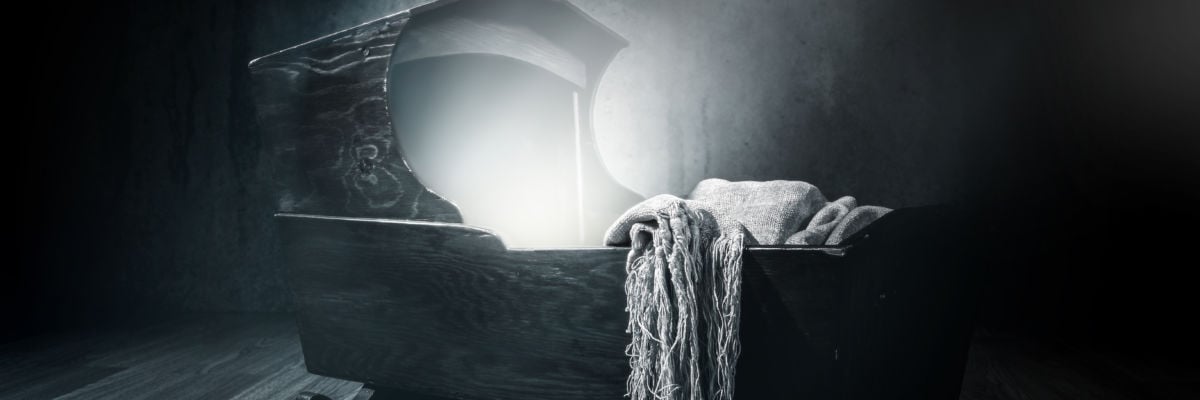
The Catholic Church usually keeps the feasts of saints on the anniversary of their deaths. We celebrate the completion of their journey to holiness in their earthly lives, and we give thanks for their role as heavenly intercessors as we tread our own paths to sainthood today. In the case of the Blessed Virgin Mary, our celebration expands. One of the most important feasts on the entire Church calendar is the great Solemnity of the Assumption (the end of her life on earth); however, we also celebrate her nativity on September 8.
St. John the Baptist gets feasts for both his death and birth as well, but the pattern we find with Our Lady is reversed in his case. We commemorate the beheading of John the Baptist on August 29, but the much more important feast for him is the Solemnity of the Nativity of St. John the Baptist on June 24, placed among a handful of the highest-ranking feast days on the General Roman Calendar. We do well to make this celebration a special part of our devotional lives, and more generally to focus on the figure St. John the Baptist in our witness to Christ today.
Why?
First, St. Luke devotes a large portion of the first chapter of his Gospel to the Baptist’s origin story, describing John’s mother Elizabeth as Our Lady’s syngenis. This word translates from Greek into English as “cousin” in the King James Version, “kinswoman” in the Revised Standard Version, and “relative” in the New American Bible (Luke 1:36). Jesus and John share some of the same blood and belong to the same extended Holy Family.
Moreover, John’s special relationship with Jesus is not only biological, but also spiritual. The angel Gabriel first visits John’s father, the priest Zechariah, to announce John’s coming birth (Luke 1:10-20), before visiting Mary six months later to announce Jesus’ (vv. 26-38). We may tend to think of John as primarily “in the wilderness, preaching a baptism of repentance” (Mark 1:4) or as the one who was executed for criticizing Herod’s and Herodias’s adulterous relationship, but we should remember that he began his evangelistic work in utero as the last prophet of Israel and the greatest forerunner of Israel’s Messiah.
Luke tells us that upon hearing Mary’s voice, John leapt in the womb, filling Elizabeth with the Holy Spirit—converting her from within—and prompting her to say the words that are familiar to us today as the second half of the Angelus prayer: “Blessed are you among women, and blessed is the fruit of your womb!” (Luke 1:42). Elizabeth further acknowledges Mary as “the mother of my Lord.” Though not yet born, John made a disciple of his mother.
Additionally, when John is presented for circumcision, his father Zechariah is transformed, as his mother was, finding himself able to speak again after the angel had struck him dumb. He then utters the prophecy known to us as the “Benedictus,” which the Church has used for centuries as a canticle at Morning Prayer in the Liturgy of the Hours. Zechariah sings, “You will go before the Lord to prepare his ways, to give knowledge of salvation to his people in the forgiveness of their sins” (Luke 1:76-77).
From the beginning of his life, therefore, John the Baptist was set apart for holy things almost on par with the work of Saints Mary and Joseph themselves. And just as the nativity of Jesus changes the world (see John 1), so too does the birth of the one chosen to proclaim Jesus’ lordship among those alive to see the light that dawned on the darkness of sin. John’s entire story is in service to Jesus, and on the Solemnity of the Nativity of St. John the Baptist, we rightly focus on his faithfulness from the beginning.
Now, a few words about the significance of this solemnity for Christian culture.
The eve of the Nativity of St. John the Baptist on June 23, known more simply as St. John’s Eve, once occupied a special place in several European Catholic cultures. In popular piety, the night correlated to the summer solstice, when the length of days reached its peak, signifying the Baptist’s words, “He must increase, but I must decrease” (John 3:30). Accordingly, Christmas falls around the time of the winter solstice six months later, when the days start to stretch out and become lighter after the late autumn gloom.
St. John’s Eve was set apart all over Europe as a day to enjoy the fine weather and revel in outdoor celebrations. People would pick the medicinal plant commonly called St. John’s Wort, and events were capped off by bonfires known as St. John’s Fires, thought to drive away demons. Although these practices are unknown in North America and not observed as they once were in Europe, the significance of St. John’s Eve has not been entirely forgotten in popular culture.
In the animated classic Fantasia, the dramatic final segment of the film is set during St. John’s Eve and depicts a demon from Slavic lore named Chernabog, described in the film as akin to Satan. At this sound of the Angelus bell, the demonic creature diminishes and folds himself back onto the mountaintop, defeated for another year. The music changes from Mussorgsky’s A Night on Bald Mountain to Franz Schubert’s Ave Maria, and the dawn breaks just before the credits roll.
St. Cyril of Alexandria called John the Baptist “a lamp preceding Christ,” and the sunshine of wholesome summer days and the fires of summer nights may still banish the enemies of Our Lord to the shadows.
It may take time to return this great solemnity to a prominent place in our culture, but we can do our part now. When Catholics keep and promote the Nativity of St. John the Baptist according to our duty, our own lamps burn bright to a world in need of the grown-up Baptist’s message of repentance and the example of his sacrifice.
Celebrate the baby Baptist today!



